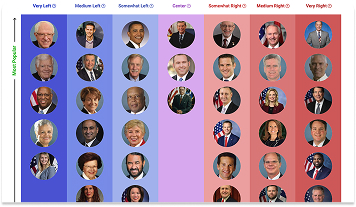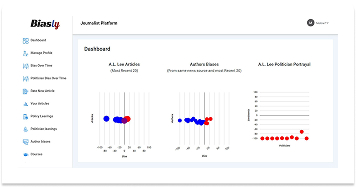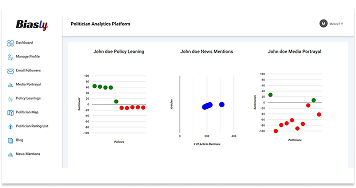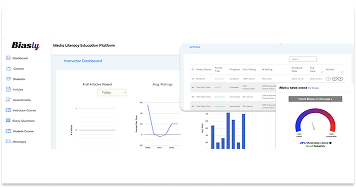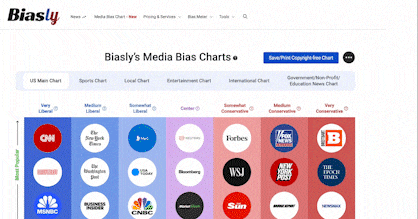Bias Meter
Extremely
Liberal
Very
Liberal
Somewhat Liberal
Center
Somewhat Conservative
Very
Conservative
Extremely
Conservative
-100%
Liberal
100%
Conservative
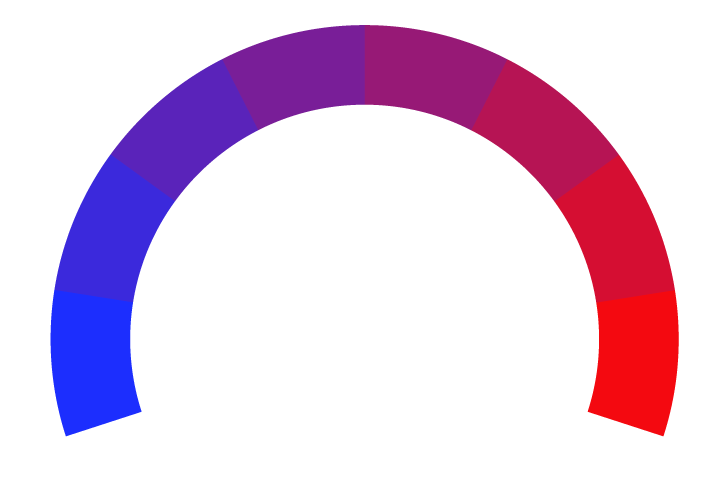
Biasly determines media bias ratings through a dual-layered approach combining artificial intelligence and analyst review. The platform’s proprietary bias detection engine, Bias Meter, evaluates sentiment, policy position alignment, and language framing across thousands of data points in news articles. Analysts then verify and interpret the AI’s findings, providing additional context where needed. Learn more
- Profile
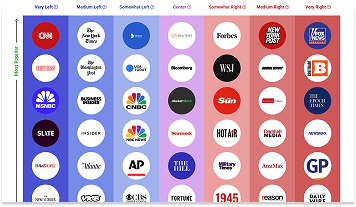
The Guardian on the media bias chart
The Guardian has a Bias Score of -18% Somewhat Left which is based on a variety of factors including its policy and politician leanings, article ratings, and the use of biased language. Its Reliability is rated as Average, and additional analytical insights are available in the other tabs.
- Bias Rating
-18% Somewhat Left
- ReliabilityPolicy Leanings
-6% Center
Extremely
LiberalVery
LiberalModerately
LiberalSomewhat Liberal
Center
Somewhat Conservative
Moderately
ConservativeVery
ConservativeExtremely
Conservative-100%
Liberal100%
Conservative
Average Reliability
*Our bias meter rating uses data science including sentiment analysis, machine learning and our proprietary algorithm for determining biases in news articles. Bias scores are on a scale of -100% to 100% with higher negative scores being more liberal and higher positive scores being more conservative and 0% being neutral. The rating is an independent analysis and is not affiliated nor sponsored by the news source or any other organization.
Politician Portrayal23% negative
Continue For Free
Create your free account to see the in-depth bias analytics and more.
By creating an account, you agree to our Terms and Privacy Policy, and subscribe to email updates.
Policy Leanings Analysis
Policy | Bias score |
|---|
The Guardian Editorial Patterns
The Guardian’s coverage of political topics often reflects a Somewhat Left bias, with consistent patterns in phrasing, source selection, and thematic focus that are Lean Left. While the publication demonstrates journalistic standards in many of its reports, the choice of issues, framing, and word usage can indicate a political slant. This analysis examines how The Guardian handles liberal and conservative issues and evaluates its language choices and editorial tendencies.
Coverage of Liberal vs. Conservative Topics
The Guardian covers topics such as the war in Gaza, LGBTQ+ rights, and gun control. Coverage of these issues often uses framing and language sympathetic to liberal positions. For example, the term “ethnic cleansing” was utilized in one of their article headlines regarding the war in Gaza. This standpoint is considered liberal.
The Guardian’s portrayal of right-wing figures and perspectives is often much more critical. By underplaying and criticizing conservative perspectives, The Guardian often casts them in a negative light. For example, right-wing politicians often receive much more backlash for statements or policy stances.
The left-wing bias of The Guardian manifests in subtle ways. One of these ways is through their diction. Words that signal inclusivity, hope, and acceptance are often used throughout articles that cover LGBTQ+ issues. Their language, when covering right-wing perspectives, is much more critical. For example, words like “attacks” and “backlash” are used to describe conservative standpoints on LGBTQ+ issues.
Policy and Issue Framing
When discussing the war in Gaza, The Guardian often references terms like ‘ethnic cleansing’ and “systematic destruction” which signal a left-leaning perspective. Similarly, on issues like abortion, The Guardian often takes argumentative stances against the conservative sources it cites.
In contrast, conservative issues like educational freedom are often criticized and much more thoroughly scrutinized. These issues are often framed in the context of their effects on marginalized groups.
Even in ostensibly neutral coverage, phrasing shapes perception. Articles will describe liberal proposals as “expanding access”, while conservative legislation may be described as “rolling back rights.” Being able to recognize key phrases like these will help you analyze media bias much more accurately.
Coverage and Relevance
The Guardian’s frequently covers issues central to the media-bias discussion. As such, it serves as a compelling case study for examining source bias and news media bias in state-focused reporting.
Readers who wish to further explore how The Guardian compares with other publications can visit Biasly’s Media Bias Chart to analyze tone and word choice in real time.
The Guardian Bias Analysis
The Guardian was founded in 1821 as The Manchester Guardian. While it began as a small, local news outlet, it has grown to be a global news source with a large following. As of 2025, The Guardian reports over 1 million digital supporters from 180 countries. The Guardian serves as an integral piece of the global flow of news reporting, which makes it a great outlet to analyze in terms of bias.
Is The Guardian Biased?
Based on Biasly’s evaluations, The Guardian is rated as Somewhat Left.
By examining content patterns and the broader context of media influence, the review offers a balanced perspective on The Guardian’s political bias.
How Does Biasly Rate News Sources?
Biasly uses proprietary algorithms and a team of analysts to provide comprehensive bias evaluations across thousands of news outlets. Over 200,000 articles from more than 3,200 sources have been analyzed to identify the most accurate and unbiased stories.
Biasly assigns each outlet three key scores:
- Reliability Score – Reflects factual accuracy
- AI Bias Score – Generated via natural language processing
- Analyst Bias Score – Assessed by human political analysts
These scores are based on seven core metrics: Tone, Tendency, Diction, Author Check, Selection/Omission, Expediency Bias, and Accuracy. These elements help analysts and algorithms evaluate the political attitude conveyed by each article.
Biasly’s Bias Meter ranges from -100% (most left) to +100% (most right), with 0% indicating neutrality. The system evaluates individual articles based on political terms, policies, figures, and sentiment to calculate precise bias ratings.
Is The Guardian Politically Biased?
The Guardian earns a Somewhat Left rating for its AI Bias Score and a Somewhat Left for its Analyst Bias Score. The Analyst Bias Score is generated by reviewers from liberal, moderate, and conservative backgrounds. Biasly analysts have reviewed multiple The Guardian articles and have noted a preference for liberal perspectives on issues like abortion, the war in Gaza, and LGBTQ+ rights.
This Bias score is determined through natural language processing that evaluates the tone, word choice, and opinion embedded in the reporting. Recent AI evaluations highlight liberal-leaning narratives in articles discussing the Republican Party and gun control issues.
Analysis of Bias in The Guardian Online Articles
To evaluate bias, Biasly analysts utilize these criteria:
- Tone: The overall attitude conveyed by the article
- Diction: Specific word choices made by the writer
- Author: The background and social presence of the journalist
- Tendency: Patterns of bias in the writer’s broader body of work
- Expediency Bias: Quick visual or textual indicators like headlines and photos that imply bias

Source: The Guardian
An example of expediency bias can be noticed in the article “Plane to purgatory: how Trump’s deportation program shuttles immigrants into lawless limbo”. The image above was used for the cover of the article. It does not portray an explicit visual bias; however, terms in the headline like “purgatory” and lawless limbo” signal a critical stance against Trump’s immigration policies. The article is attempting to frame the issue from a liberal perspective even before we begin reading the article.
An example of diction being used to convey bias can be seen in the article “Senators say US is complicit in Israel’s ethnic cleansing of Gaza”. Here is a paragraph from the article:
“Two Democratic senators claim they have reached the “inescapable conclusion” that Israel is acting on a systematic plan to destroy and ethnically cleanse Palestinians from Gaza to force local people to leave, and they say the US is complicit.”
Terms like “systematic plan” and “ethnically cleanse” are both examples of charged language that favors a liberal bias. Even if these charges are true, the role of a factual article is to remain neutral and present a balanced narrative for the reader. The language in this paragraph indicates that this article is not portraying this issue in a neutral manner, but instead with a liberal bias.
An example of how tone can be used to show bias can be observed in the article “Publications aimed at LGBTQ+ audiences face discrimination from advertisers, editors warn”. Through its source and quote selection, this article positions itself against the discrimination that roll-backs to DEI programs will cause. Here is an example of this from the article:
“Publications aimed at LGBTQ+ and other diverse audiences are facing ‘good old-fashioned discrimination’ as advertisers avoid them after political attacks on diversity and inclusion campaigns, editors have said.”
The tone of this article, with quotes like this, consistently favors a pro-LGBTQ stance. The article does not take a more neutral tone through adding other perspectives or more neutral language. The rhetoric and framing of the story remains consistent to with a liberal bias. As a result, the tone presents resistance to these actions positively, also signaling a left-leaning bias.
Looking at the background of The Guardian’s reporters can also provide insight as to whether their articles may be biased. Here is a tweet from Sam Levine, a reporter for The Guardian:
LaVaughn Williams is a former felon who voted for the first time in Virginia today. Listen to her talk about the power of the ballot pic.twitter.com/wQWjTXeSn4
— Sam Levine (@srl) November 7, 2017
From this post, we can see that Levine doesn’t share his personal views or attempt to spin the story in a certain way. Instead, he merely presents a specific perspective for the viewer to come to terms with on their own. At least in this sense, we may infer that Levine approaches some of his personal views from a centrist perspective.
An example of how an author’s tendencies can be used to see whether an author often takes biased stances can be seen through The Guardian’s reporter Joseph Gedeon. Here are some of his previous article titles: “MSNBC fires analyst Matthew Dowd over Charlie Kirk shooting remarks”, “Trump signs executive order rebranding Pentagon as Department of War”, and “Washington DC mayor signs order to continue cooperation with federal police”. Gedeon’s headlines and diction within his articles tend not to be inflammatory or politically-charged. This suggests Gedeon likely tends towards a more neutral, objective narrative style.
Analysis of The Guardian Opinion Articles
To fully understand bias in media, it is important to distinguish factual news articles from opinion pieces. While factual news articles are meant to be objective and framed neutrally, opinion pieces more often express the personal viewpoints of the author. This section applies the criteria for recognizing bias in factual news articles to opinion articles.
In the article “Trump apparently thinks domestic violence is not a crime. That makes sense”, the author takes a very critical stance against Trump’s comments on domestic violence, which can be seen through the tone of her article. The author frames Trump as a “misogynist” and describes the actions he is taking to oppress victims of sexual abuse. Criticism of Trump in this manner often signals a liberal bias.
The article, “Trump or no Trump, Europe’s relationship with the US will never recover”, on the other hand, shows how an opinion piece can be centrist. The article, by focusing more broadly on not just Trump’s but the U.S.’s relations with Europe, makes the tone of this article more neutral. The author frames the narrative as an overview and analysis of multiple sources of European and U.S. tension, instead of a scathing critique.
These examples show that while not all The Guardian opinion pieces are liberal, the platform frequently publishes content that aligns with liberal media narratives. This tendency underscores the importance of distinguishing subjective viewpoints from straight reporting, especially when interpreting the political leanings of any news organization.
Who Owns The Guardian?
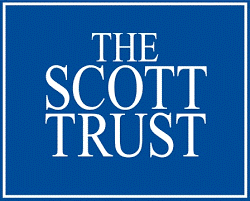
Source: The Scott Trust Limited
The Guardian is owned by The Scott Trust Limited, a British media company. The Scott Trust Limited was formed in 1936 to secure the financial position of The Guardian. Here is The Guardian’s explanation as to the benefits of their unique ownership:
“This exceptional, if not unique, form of governance for a news publisher ensures that all surplus financial returns are reinvested into our high-quality journalism for a global audience rather than benefiting a proprietor or shareholders.”
How to Evaluate Bias
Although Biasly rates The Guardian as Somewhat Left, it’s important to remember that bias can vary from article to article. So, let’s learn how to evaluate media bias.
Recognizing media bias requires awareness and critical thinking. Often, readers trust news sources that affirm their existing beliefs, a psychological tendency known as confirmation bias. This makes it harder to identify slanted narratives or one-sided reporting.
To combat this, it’s essential to challenge your assumptions by consulting multiple viewpoints and verifying news through third-party analysis. Tools like Biasly’s media bias ratings allow readers to compare the same news story across the political spectrum.
Ultimately, bias isn’t always a matter of what is said—it’s also about what is left out, how topics are framed, and which stories are chosen for coverage. Learning to recognize these patterns can help readers make more informed decisions and develop greater media literacy.
To start comparing news outlets and gain a better understanding of bias, sign up for Biasly’s Media Bias & News Analytics Platform to see how stories vary between sources.
The Guardian Reliability Analysis
Is The Guardian Reliable?
The Guardian finds itself in the middle of the spectrum with an average level of reliability. This suggests that there may be other factors involved as to why The Guardian has such a high readership. At Biasly, we specialize in evaluating not just bias but also the reliability of media outlets. Let’s explore the accuracy and trustworthiness of The Guardian.
How to Evaluate Reliability?
Reliability refers to how trustworthy or accurate a news source is. If we can’t trust what we read, then continuing to consume content from that outlet serves little purpose. So how do we evaluate a news outlet’s reliability?
There are several potential measures of reliability to look out for when trying to determine whether a media source is reliable or not. Red flags for an unreliable article can include the presence of wild, unsubstantiated claims, facts dependent on other unreliable sources, heavy use of opinionated language, and more. In contrast, hallmarks of a reliable source include:
- Absence of subjective language
- Citing credible sources (e.g., .gov, .edu, academic references)
- Verifiable facts and statistics from multiple outlets
- Use of primary sources, like interviews or transcripts
- Consistency with coverage across other platforms
Biasly’s reliability scores incorporate these elements in evaluating media outlets.
So How Does The Guardian Fare in Its Reliability?
The political reliability index developed by Biasly assesses both accuracy and trustworthiness. The Guardian currently holds Average Reliability Score, which is calculated as a weighted average of:
- Fact Analysis Score – Evaluates the accuracy of claims, facts, and evidence.
- Source Analysis Score – Assesses the number, diversity, and credibility of sources and quotes used.
The Guardian’s Source Analysis Score is Average at 53% Reliable. This suggests moderate trustworthiness in its sourcing practices. The score is AI-generated and considers quote length, frequency, diversity, and quality.
The Fact Analysis Score of The Guardian is Average at 69% Reliable. This further shows how well The Guardian supports its claims, addresses selection and omission bias, and presents verifiable evidence.
While The Guardian leans toward factual reporting, occasional lapses, such as unbalanced viewpoints or incomplete data, can affect its reliability rating. These nuances emphasize the importance of analyzing individual articles.
The Guardian’s Accuracy and Reliability
According to Biasly’s analysis, The Guardian maintains Average Reliability Score, but individual articles may vary significantly. Let’s dive into the details.
Two common types of bias that affect factuality include:
- Selection Bias – Highlighting or omitting stories to fit a particular narrative.
- Omission Bias – Leaving out differing perspectives or relevant details to skew perception.
Biasly’s accuracy ratings use a scale from 1% (least accurate) to 100% (most accurate). Factors include the presence of supporting evidence, internal and external reliable sources, and balanced viewpoints.
Analysis of Reliability in The Guardian’s Online News Articles
The Guardian aims to provide objective, fact-based reporting. Its staff includes writers from varying ideological backgrounds, which can help balance coverage.
Quality of Sources and Facts Used
The Guardian often uses credible sources. However, some articles skew in how comprehensively they present opposing viewpoints.
Some indicators of the reliability of an article are the number of quotes, quote length, and the diversity of sources. An example of an article that loses reliability due to its lack of source diversity is “Rising inequality is turning US into an autocratic state, billionaire warns”. There is only one source in this article:
- Ray Dalio, founder of Bridgewater Associates (a hedge fund)
The article includes seven quotes, five of which are long. Dalio himself is seemingly neither left nor right-leaning, as he has been critical of both the Democratic and Republican parties. However, this article rates lower on reliability due to the limited source diversity. By only presenting Dalio’s perspective, the article does not allow us to grasp the issue from a neutral standpoint.. A thorough analysis should include multiple perspectives on this issue from a range of sources with different ideological biases. In situations like this, Biasly encourages readers to search for other articles that may provide different perspectives on this issue.
A good example of how an article can build reliability can be seen in the article “South Korea outraged at 300 workers treated as ‘prisoners of war’ in US raid”. Here are some of the sources cited in the article:
- The Guardian, a British news outlet
- Kang Hoon-Sik, South Korea’s Presidential Chief of Staff
- Lee Jae Myung, President of South Korea
- Reuters, a global news outlet
- Yonhap News Agency, a South Korean news outlet
- MBC, a South Korean news channel
- Seoul Economic Daily, a South Korean news outlet
- Chosun Ilbo, South Korean news outlet
- Hankyoreh, South Korean news outlet
This article includes nine quotes, five of which are long. The Guardian, Kang Hoon-Sik, Lee Jae Myung, MBC, and Hankyoreh are all considered to be left-leaning sources. Reuters is considered to be a centrist source. Yonhap News Agency, Seoul Economic Daily, and Chosun Ilbo are all considered to be right-leaning sources. This article can be deemed as mostly reliable, as the article portrays perspectives from multiple ideological perspectives. In this sense, the reader is given a much broader understanding of the issue at hand.
Selection and Omission Bias
An article that has omission bias is “‘We’re all going backwards’: dismay as Trump undoes Biden student-debt plan”. Here are the sources cited in this article:
- Faith, has $38,113 in federal student loan debt
- Jennifer, has $63,419 in federal student loan debt
- Sedona, has $170,848 in federal student loan debt
- Chris, has $50,000 in federal student loan debt
Because the article only quotes sources that are in debt, readers will only get their perspective. That is, they will only be able to understand the perspective of those who want their student loans to be forgiven. Without presenting the conservative perspective, readers cannot grasp both sides of the argument, and therefore cannot grasp the issue as a whole. By omitting the conservative perspective, this article portrays a left-leaning bias.
An example of selection bias can be seen in the article “US officials plan to punish foreigners ‘making light of’ Charlie Kirk death”. This article only highlights conservative perspectives like Trump and Christopher Landau in order to fit the narrative that conservatives are restricting freedom of speech. For example, out of the nine quotes in the article, five of them are from either Landau or Trump. Even if this is true, it is also important to include liberal perspectives in the article to see in what ways these measures are being opposed. This gives the reader a more general understanding of the issue, rather than just what one side is doing.
An example of an article that does not have selection or omission bias is “Government shutdown draws near as Democrats push for healthcare funding”. Here are some of the sources referenced in the article:
- Donald Trump, President of the United States
- Hakeem Jeffries, House minority leader
- The Guardian, British news outlet
- Chuck Schumer, Senate minority leader
- John Thune, Senate majority leader
- Politico, an American news outlet
- Suzan Delbene, United States Representative
Donald Trump and John Thune are both right-leaning sources. Hakeem Jeffries, The Guardian, Chuck Schumer, Politico, and Suzan Delbene are all considered left-leaning sources. By providing both sides of the argument, the article does not omit or favor one perspective over another.
So, Is The Guardian Reliable?
Overall, The Guardian can be considered to be an outlet that is moderately reliable. It demonstrates a consistent goal of journalistic integrity and typically supports claims with sources and quotes. Occasional omissions and framing bias do appear, particularly on culturally sensitive or partisan issues.
As media literacy improves, readers can more easily detect issues with selection bias, omission bias, and factuality. To strengthen your ability to assess reliability across the political spectrum, use the News Bias Checker to compare how multiple outlets report the same story.
This empowers you to consume more accurate, balanced, and dependable news.
Additional Insights
News Source Comparison
In terms of sources with a similar political leaning, The Guardian is often compared to CNBC, USA Today, and NBC News. Readers seeking balanced political coverage may compare The Guardian’s framing of issues with outlets rated as Center or Lean Right on our Media Bias Chart, or explore other regional papers on our Similar Sources page.
Notable Contributors and Authors
The Guardian features a range of reporters and columnists, including staff and freelancers. While their reporters may have a slightly left-leaning perspective, their reporting is often nuanced and objective. Writers like Moira Donegan and Lucy Campbell are left-leaning, which can be seen through their articles. Writers like Chris Stein and Joseph Gedeon tend to be more centrist in their rhetoric.
Related Tools and Resource Pages
To better understand how The Guardian fits into the broader media landscape, we recommend exploring these helpful resources:
- Media Bias Chart: See where The Guardian ranks among hundreds of media outlets across the political spectrum.
- Political Bias Chart: Visualize political slants of news sources across various policy areas.
- Journalist Bias Analytics Platform: Explore how individual journalists contribute to bias within their publications.
- Politician Bias Analytics Platform: Compare how politicians are framed differently by The Guardian and other outlets.
- Media Literacy Education Platform: Learn how to critically assess media sources, bias techniques, and news reliability.
Frequently Asked Questions
The Guardian is rated as Somewhat Left based on Biasly’s media bias algorithm, which assesses sentiment, article framing, and policy favorability.
While The Guardian is not widely known for promoting fake news, some articles have shown selection and omission bias, especially in political reporting. Its factual reporting is generally sound.
Biasly uses a combination of AI sentiment analysis and human analyst review to assess tone, fact accuracy, source quality, and media bias indicators. Learn more on our Bias Meter page.
Yes, but with caution. The Guardian typically upholds fact-based journalism, though occasional partisan framing and selective reporting may impact overall news reliability.
Ratings are based on recent news using data science and A.I. technology.
Military Spending
| Date | Sentiment | Associated Article | Snippet |
|---|---|---|---|
| 08/25/2019 | 75% For | Trump Family Detentions Flores Agreement (link) | So, of course, the Trump administration is doing the opposite in a baldfaced |






















